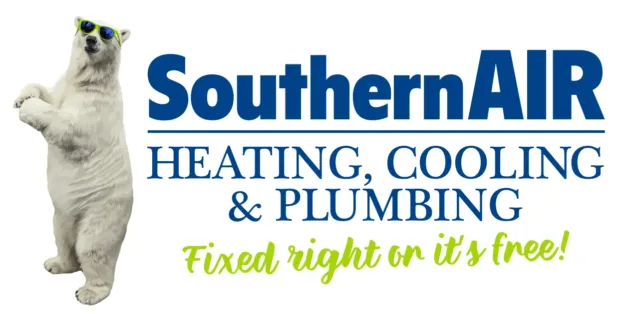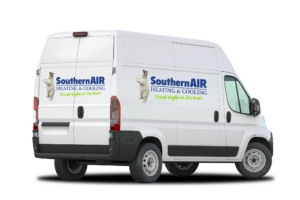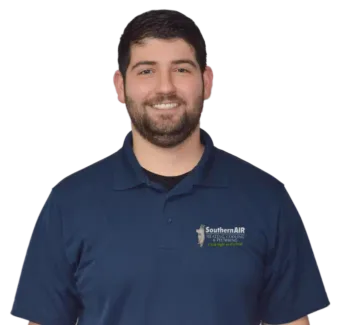Everyone shopping for a new heating and air conditioning system says the same thing, “I want a high efficiency system at a fair price.” Problem is, every system advertizes itself as “high efficiency”. Not only that, but there is a lot more to an air conditioning system than efficiency. We thought it would be helpful to describe the perfect air conditioning system in terms of features and then give options for each feature in cost order.
High Efficiency. A perfect air conditioning system is highly efficient. The Air Conditioning and Refrigeration Institute (ARI) rates all air conditioners by SEER. The higher the SEER rating, the higher the efficiency. If you have a system that is over 10 years old, it is most probably rated between 8-10 SEER. New systems are manufactured at various SEER ratings between 14 and 21. A 20 SEER system uses half the electricity of a 10 SEER.
Fifty percent relative humidity is perfect for a home. It inhibits mold growth, doesn’t dry your sinuses and keeps floors and furniture from shrinking.
Dehumidification. A perfect air conditioning system keeps humidity in your home at 50%. This is a tricky one…humidity is removed any time an air conditioner is running. An undersized system dehumidifies better because it runs longer to cool a house but it cannot cool a house on very hot days. An oversized system doesn’t run long enough to dehumidify well. Temperature trumps humidity so we size systems to insure that the house will be comfortable on a hot day. This means that on any other day, or at night, the system is oversized.
Air conditioning manufacturers have tried to solve this problem by creating 2-stage and variable speed systems. Variable speed systems operate over a continuous range between 25% and 100% of capacity. Because they never produce more cooling than the home requires at any point in time, they basically run continuously during warm months. The result is dramatically lower humidity and high levels of comfort. Two speed systems operate at 70% capacity most of the time and switch to 100% only when the temperature within the home exceeds the requested temperature by 2 or more degrees. The end result is longer run times, hence lower humidity.
There are whole house dehumidifiers in the market that dehumidify independently of the home’s air conditioning system. The premier products are Ultra-Aire manufactured by Therma-Stor. The major advantage of stand-alone dehumidifiers is that they work when your air conditioning system isn’t. This includes spring and fall when temperatures are moderate but humidity is a problem. It also includes nights for the same reason.
Temperature. A perfect air conditioining system keeps every room the temperature you want at any time of day. This is accomplished through thermostats, duct design, and zoning.
Programmable thermostats allow a homeowner to control temperature at any time of day, any day of the week but there is more to comfortable cooling than that.
Most air conditioning systems distribute air through a series of metal or flexible ducts. Because the rooms of a house gain more or less heat at different times of the day, duct systems are designed to cool each room at its hottest time of day (i.e.: east facing rooms gain more heat in morning, west facing more in the afternoon). This is not the most efficient or comfortable way to design systems.
Zoning helps by dividing the home into room groupings that have common heat gains. This can be done by using multiple air conditioning systems (one for upstairs, one for downstairs). It can also be accomplished using less expensive zone controls. Zone controls enable one system to have many cooling zones, each with its own thermostat. The air flow into these areas is regulated by electric dampers that channel air to where it is needed.
Zoning accomplishes a few things: it reduces the size of the air conditioner required for the home. It improves dehumidification and it increases the efficiency of the air conditioning system.
Air Purification. Years ago, an air filter was designed to protect air conditioning equipment from being clogged with lint and dust. Today’s systems can be installed with many purification and filtration options including Electronic Air Cleaners, Ultra-Violet Purification, a variety of Pleated Filters or simple disposable filters.
The type of filtration depends on the construction of the home and the particular needs of the homeowner. If allergies are a problem, consider Electronic Air Cleaners or Ultra-Violet. For general air cleaning, a 5″ pleated filter or 1″ pleated filter might suffice.
Fresh Air. A perfect air conditioning system will introduce controlled amounts of fresh air into the home to replenish oxygen and reduce carbon dioxide levels.
“Air changes in a confined space are important for a variety of reasons, mainly though, we need fresh air to live. Without sufficient fresh air exchange, moisture is trapped in a room/home/building, molds can feed, and other allergens and excessive dangerous gases (e.g. Carbon monoxide, Carbon Dioxide, urea-formaldehyde), can remain in the home. “Stale” air is unhealthy and, since humans and pets add to it by breathing, sweating, washing, showering and drying, we need to ventilate the home, increasing the number of times the air ‘exchanges’ in the home with outside fresh air.
The number of ‘air changes per hour’ were less of a problem before ‘air sealing’ came into play, because construction practices and products were not geared to energy efficiency (in the USA, with lower energy costs). With a new focus on energy efficiency, reducing carbon footprints, and reducing dependence on fossil fuels, consumers try to seal their homes from air transfer in and out of their homes in winter and summer. This is a double edged-sword; the importance of fresh air intake cannot be overstated.”*
There are several ways to introduce fresh air into a structure from an Energy Recovery Ventilator such as Trane’s Fresh Effects, to a stand-alone whole house dehumidifier that can also introduce fresh air such as Ultra-Aire, to simply running a duct from outside to your system’s return air.
The Perfect Air Conditioning System.
Now we get to define the perfect air conditioning system. We’ve listed the features of a perfect system with equipment options and links for your research.
System:
- Trane XV20i Variable Speed Condenser with variable speed heat
- Trane XV18i Variable Speed Condenser with variable speed heat
- Trane XR17 2-Stage Condenser with variable speed heat
Dehumidification:
- Therma-Stor’s Ultra-Aire UA-XT105 or other Ultra-Aire system
- Trane XV20i or XV18i variable speed systems
- Trane Variable Speed furnaces and Hyperion air handlers or Zoning Controls
Thermostats:
- Trane Comfortlink II, internet enabled, color touch screen
- The Nest self-programming, internet enabled. (single stage only at this time)
- Trane Comfortlink I, programmable, multi-stage
Air Distribution:
- Multiple Systems
- Zone Controls
- Variable speed blowers
Air Purification:
- Trane Clean Effects electronic air cleaner
- Sanuvox R+ UV Purification system (do not be fooled into thinking all UV is alike)
- Trane Perfect Fit 5″ pleated filter system
Fresh Air:
- Ultra-Aire ventilating dehumidifiers
- Trane Fresh Effects energy recovery ventilator
- Duct from outside to the return air of your system
We know that not everyone can afford the perfect system. We have given you this information so you can craft a system that is best for you based upon your needs and budget. Southern Air Heating, Cooling & Plumbing Heating and Air specializes in assisting customers in deciding on the best air conditioning system for them by providing information and education. We are equally pleased in installing a 14 SEER, contractor grade system or a 20 SEER deluxe system if our customers have the information necessary to make their decision and have chosen the system that best fits their needs.






